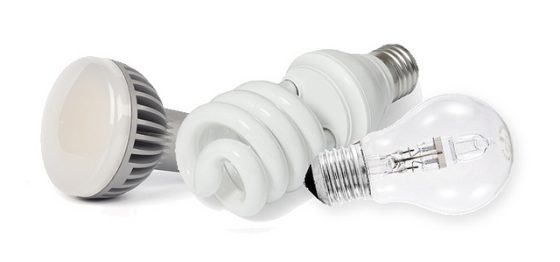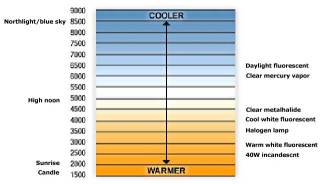Definite guide for declaration found on light bulb packages
 Lately, a lot of news reported about new light bulbs which are on their way or ready to hit the market, and I felt obliged to clarify and guide you for your next purchase. No, I’m not going to recommend my favorite company, technology or model, but rather explain how declared longevity, watts, volts, kelvins and lumens define the way a light bulb should perform. Since the article is lengthy, it is appropriately divided into sections you might want to skip.
Lately, a lot of news reported about new light bulbs which are on their way or ready to hit the market, and I felt obliged to clarify and guide you for your next purchase. No, I’m not going to recommend my favorite company, technology or model, but rather explain how declared longevity, watts, volts, kelvins and lumens define the way a light bulb should perform. Since the article is lengthy, it is appropriately divided into sections you might want to skip.
Aside the fact we’re switching from incandescent light bulbs to more energy efficient lighting options such as Compact Fluorescent Light bulbs (CFLs) and Light-Emitting Diodes bulbs (LED bulbs), there are new emerging “hybrid” incandescent bulbs which manage to achieve 30 percent higher efficiency compared to traditional light bulbs. That means we should stop referring to watts and use lumens as the amount of light a light bulb is declared to emit. So, let’s shine some light on the information you can find on a light bulb package.
The role of watts in light bulb declaration
Watts (W) define how much energy a light bulb is consuming at the moment. Why does it matter you ask? Aside being the old definition of how bright a bulb shines, it shows how high your electric bills can go. For instance, while bulbs don’t require as much energy as heating or cooling units, not to mention power hungry appliances, you do tend to use light bulbs for longer periods of time at multiple places around you.
As an example, modern computer monitors require from 24 to 70 W to be powered when they aren’t in sleep mode. When you compare that consumption to traditional incandescent light bulbs which usually come in 40, 60, 75, or 100 W versions, and consider the actual time you use your monitor and use your light bulbs, a single light bulb consumes more energy per day than a modern monitor (or smaller models of old CRT monitors).
Although lower energy consumption leads to lower electricity bills, you need to find balance between the cost and the amount of light needed for the space where lighting is used. Using proper lighting as well as shift away from incandescent light bulbs could annually save between $100 for small households and $1,000 in large households.
That’s why the move to more efficient lighting bulbs is going green, and we’re going to write about pros and cons of most popular commercially available light bulbs in one of the upcoming articles. How do you manage to find a bright enough equivalent of a bulb you used to buy you wonder?
The role of lumens in light bulb declaration
Instead of the watts, you need to look at lumens (lm) declaration on the bulb packaging. Lumens tell you how bright a bulb is, where more lumens mean brighter light.
Here’s a table of equivalents between W and lm declarations in ideal conditions:
Power (W) | Output (lm) | Power (W) | Output (lm) | Power (W) | Output (lm) |
5 | 25 | 55 | 800 | 95 | 1,600 |
15 | 110 | 60 | 850 | 100 | 1,700 |
25 | 200 | 65 | 1,000 | 135 | 2,350 |
35 | 350 | 70 | 1,100 | 150 | 2,850 |
40 | 500 | 75 | 1,200 | 200 | 3,900 |
50 | 700 | 90 | 1,450 | 300 | 6,200 |
Since the mentioned equivalents above are achieved during ideal conditions, and the efficiency of different incandescent light bulbs vary, you can rely on numbers 5 W lower than it is declared on the box of the bulbs you are used to. For example, for the amount of light a 60-watt traditional incandescent bulb emits, you should look for a new bulb which is able to shine about 800 lumens.
So, the next time you find yourself looking to replace your traditional incandescent with an energy efficient bulb, choose your next light bulb for the brightness you want and look for lumens. But those new lights don’t shine warm light you are used to?
The role of kelvins in light bulb declaration
Kelvin (K) is the unit used to measure color temperature. For those who didn’t pay attention on physics classes the Kelvin thermodynamic temperature scale is defined so that absolute zero is 0 kelvins (K). Imagine heating a bar of steel and observing the color of the bar at increasing temperatures. At first, the bar will appear to glow a dull red, and as the temperature increases it turns to yellow, then to white, then to bluish white, and finally to blue.
The color temperature of a light bulb describes how the light appears when the human eye looks directly at the illuminated bulb. A light bulb that produces light perceived as yellowish white will have a color temperature of around 2700K. Color temperature in range between 3000K and 3500K appears less yellow and whiter, while the color temperature of 5000K or higher appears bluish white.
So, if you desire to have a “warm” lighting effect which is common by incandescent light bulbs, you should aim for bulbs in the 2700K – 2800K range. When the desired effect is neutral or white, use light sources in the 3000K – 3500K range. For a slightly bluer effect use 4000K. Keep in mind that the color temperature of daylight varies, but is often in the 5000K to 7000K range, so the new lighting actually provides more natural feel between the outside and inside lighting.
Hence, we can conclude that the color temperature of your lighting should be adjusted to your needs and spaces where they are used. While you might want to put the bulbs with larger color temperature in your bathrooms and working areas, you should use bulbs with less color temperature in leisure and resting areas where you want lower eye strain which occurs in higher contrast.
But why would you invest into a new light bulb when they never last as much as declared?
The role of volts in longevity of a light bulb
Here’s some more basic physics. The resistance of a material usually increases with temperature. For instance, for tungsten incandescent light bulb filaments, the resistance increases by about 0.6% for every degree rise in temperature. This means that the filament’s resistance rises from a few ohms when cold to tens of ohms when hot.
Since I = V/R (I is the current, V the voltage, and R the resistance), it is obvious that, for a given voltage V, the initial current is largest and amounts to more than 10 times the rated value. So if your light bulbs burn more often compared to other people you know, there is a good chance your installations aren’t set up right or the amount of voltage arriving from your power company is higher than declared in your country (for instance over 125 instead 120V or over 228 instead 220V).
Most household bulbs which operate on higher voltage than declared lose around 60 percent of the declared life. That’s why buying light bulbs with more V prolongs their life. By purchasing a 75-watt (130 volts) bulb instead of a 60-watt (120 volts) bulb, you produce more light by using less electricity and prolonging the light bulb life.
In one of our future articles, we’re going to make a breakdown about most popular available lighting technologies and what influences their longevity.











I realy like this guide.
The table is a bit confusing without sections but different colors make it a bit easier to read.
Do you really save that much money simply by switching away from incandescent light bulbs?
Hey, when is the article about making them last longer going to be published?
Very nice article!
author
@Coralia: Felt the same way :)
@Adonay: Yes, it’ll be explained in the upcoming article.
@Odne: It was planned for last week but I spent too much time developing new features for the website. Should be published this week though.